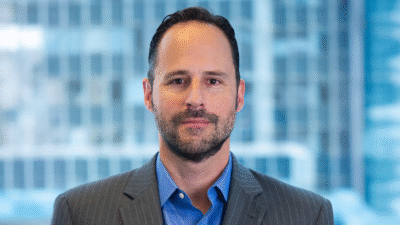There’s an ETF for Everything. Is That What Investors Really Want?
About 900 ETFs launched this year, and dozens of highly leveraged and spot crypto products await approval. Not all of them will catch on.

Sign up for exclusive news and analysis of the rapidly evolving ETF landscape.
Will it ETF?
This year, like others before, has been a record for exchange-traded fund launches. The surge in new products has brought bread-and-butter varieties that fit nicely in model portfolios, but it has also added niche and risk-on funds that aren’t suitable for most investors. There are ETFs that seek to deliver twice the return on shorts of single stocks like Nvidia, focus on memes, deliver income in arguably overly complex packages, or hold a range of crypto assets. And while they haven’t gotten through SEC approval yet, there are bold ETFs that promise to invest (as closely as possible) in UFO technologies or leverage single stocks and crypto by up to 5x. Issuers can prep, and often launch, almost anything they can dream up. But is the product explosion a response to what investors want, much less what they need?
“This trend of levering up is really troubling,” said Laura Varas, CEO of consumer research firm Hearts & Wallets. “On one hand, you have a product like VTI (the Vanguard Total Stock Market Index Fund ETF), which is a way to democratize access to stock equity markets at a very low price point. On the other hand, you have this crazy proliferation of firecrackers that could blow up in your hand.”
The Old Spaghetti Factory
Through October, 899 new ETFs came to market in the US this year, per Morningstar Direct. In August, the total number of ETFs surpassed 4,300, outnumbering stocks, but sitting at about half the number of mutual funds in the US. Largely, net flows are strongest among a select few products, most of which are broad-based and have been around for a while. “That space is pretty saturated,” Morningstar manager research analyst Zachary Evens said. Still, there are exceptions for a few ETFs that launched this year: the Schwab Core Bond ETF (SCCR) has surpassed $1 billion, and the JPMorgan Active High Yield ETF (JPHY) has reached $2 billion, he noted.
Here’s how this year’s new class of ETFs break down, according to Morningstar Direct:
- The highest numbers were in the miscellaneous (247), nontraditional equity (178), US equity (122) and taxable bond (106) categories.
- Smaller numbers of new products were in sector equity (70), international equity (65), alternative (54), municipal bond (36), allocation (16) and commodities (5).
One firm, Russell Investments, launched five multi-manager ETFs this year, its first since shuttering a wider line of ETFs years ago. The new iteration of products is a set of building blocks designed to work in the firm’s active and passive portfolios.
“There still are opportunities for certain firms without offerings in different core segments … You’re seeing it more in the fixed income side these days, especially in the active side,” Evens said. “Apart from that, we’re seeing hundreds of very niche product offerings, many of which are going to get little or no traction. That’s almost by design.”
A review of pending ETFs filed with the SEC this year shows that high proportions of the would-be products are leveraged single-stock, spot crypto and derivative income strategies. In part, that’s because there are so many possibilities. Niche ETF issuers have filed for variations on single-stock strategies for a wide range of the biggest publicly traded companies, and there are so many lesser-known crypto assets and meme coins just waiting to be packaged up as ETFs. Many of these won’t gather enough assets to be self-sustaining, and issuers know that. The strategy is to spray out a wide variety of funds and hope that one or two winners emerge.
Give the People What They Want
It might not be a coincidence that the rise of niche and highly leveraged ETFs is happening in concert with the boom in prediction markets and live sports betting. “I would argue that people want to bet, to a certain extent,” Evens said. “There are a ton of options for engaging in speculation in different markets. ETFs is one of them.”
A look at ETF investors:
- The 16% of US households with 20% or more of their investible assets in ETFs are more likely to have high risk tolerance than the general population and feel confident about investing, according to Hearts & Wallets data.
- About four in 10 say they trade options, and they’re also more likely to hold crypto and alternatives.
- While 18% have portfolios built just with core, traditional long-term ETFs, 53% also use niche and tactical ETFs and 11% focus most on niche and tactical funds, a recent Charles Schwab survey found. Millennials in particular were more likely than other generations to say they use spot crypto and single-stock ETFs.
Accompanying the rise in ETF use is the proliferation of online brokerages. In 2024, 51% of US households had such accounts, and that jumped to 57% this year, per Hearts & Wallets. The increase in options use is a consequence of the free trading models that brokerages have relied on to recruit users, Varas noted. Selling options is a reliable way for them to make money, and brokerages have pushed them, with some even gamifying the experience. “It’s a tragedy that trades went to zero. It’s not free to operate an online brokerage platform,” Varas said.
Read the Label: As in many areas of life, there is a danger in overestimating how much one knows. Many of the ETFs on the market use complex strategies, and financial advisors can help in that area. “Products like buffered ETFs and covered call ETFs often attract significant inflows because of their eye-catching yields or downside protection features, not necessarily because investors fully understand how they work,” said Brian Canning, founder of Brave New Wealth. For example, option-based strategies’ returns can be affected by bid-ask spreads, trading execution and tax treatment, not just by the expense ratios that investors are used to looking at, and they should ask themselves if they understand how the income or protection features work and what the risks are, he said. “Without that due diligence, it’s easy to mistake complexity for sophistication.”











